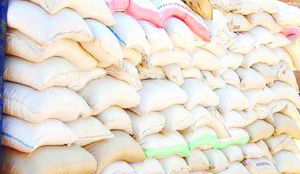THE revelation that Zambia has sufficient maize stocks for household consumption and industrial use despite the projected decline in the production of the commodity is a clear indication that no Zambian will go hungry.
The Government on Thursday announced that maize production would reduce this season compared to last year but the national food balance for the 2015/2016 marketing season shows that the country has enough grain to feed its population.
It is even gratifying to hear that besides the estimated 2,618,221 yield for this year, the country has a carryover stock from last season’s of 1,345,401 tonnes of maize stored by the Food Reserve Agency (FRA), private and commercial farmers.
The total supply of maize available for the 2015/2016 marketing season is 3,963,622 tonnes, for an estimated population of 15.7 million people.
The food balance sheet shows that the total maize required for consumption, and other commitments amounts to 3,086,854 tonnes.
These requirements include the anticipated national strategic reserve stock of 500,000 tonnes which the Government would buy from farmers this year through the FRA, meaning Zambia will have enough maize stocks.
When the requirements are subtracted from the total maize available, the food balance sheet indicates that the country will have a maize surplus of 876,738 tonnes, which could be exported to other countries that are in dire need of the crop.
More comforting information is the Government’s stance that it will not compromise the national food security even when the country exports its surplus grain.
However, the Government should ensure that the FRA announces the maize floor price on time so that small-scale farmers are not exploited by some grain dealers.
If FRA delays to mop up the crop, farmers will be compelled to sell the produce to millers, some of whom are already stock-piling the commodity, and this is likely to create an artificial shortage of the grain.
Several millers are already out in the field making advance payments to desperate farmers so that once the maize moisture content reaches the required temperature their trucks could move in to mop up the grain.
As happened before, these millers would hold on to their maize and demand for a subsidised grain from FRA.
But as soon as the subsidised commodity is dealt with, the same millers would offload their maize and eventually increase the price of mealie meal, citing high production costs.
Where possible, the Government should also find a way of transporting maize to the millers from FRA depots failure to which millers would continue citing transport and production costs as reasons for increasing mealie meal prices.
So far in Ndola and Lusaka, all the maize from nearby FRA depots has been collected, so millers are going to Chambishi and Mumbwa depots, respectively, using their resources to collect the grain.
This could be the other reason why some millers have not reduced the prices of mealie meal further as directed by the Government, not that there isn’t enough maize.
The Government should further tighten security in border areas on the Copperbelt, especially Chililabombwe, Ndola and Mufulira to prevent smuggling of mealie meal into DRC lest this also be an excuse for the commodity’s shortage.
All in all, Zambians should sigh with relief following the Government’s assurance of enough maize and that no one will starve.







